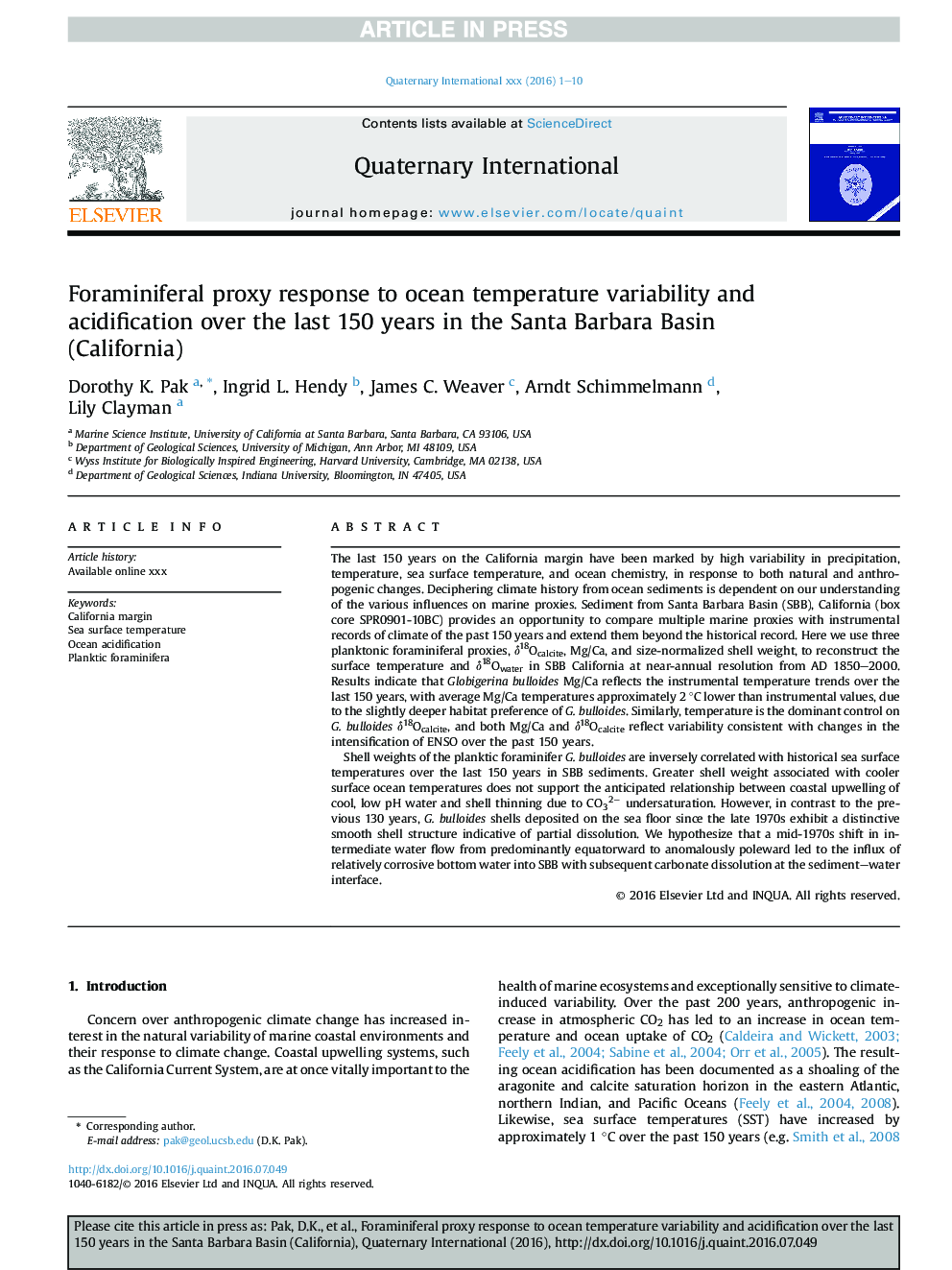| Article ID | Journal | Published Year | Pages | File Type |
|---|---|---|---|---|
| 7450292 | Quaternary International | 2018 | 10 Pages |
Abstract
Shell weights of the planktic foraminifer G. bulloides are inversely correlated with historical sea surface temperatures over the last 150 years in SBB sediments. Greater shell weight associated with cooler surface ocean temperatures does not support the anticipated relationship between coastal upwelling of cool, low pH water and shell thinning due to CO32â undersaturation. However, in contrast to the previous 130 years, G. bulloides shells deposited on the sea floor since the late 1970s exhibit a distinctive smooth shell structure indicative of partial dissolution. We hypothesize that a mid-1970s shift in intermediate water flow from predominantly equatorward to anomalously poleward led to the influx of relatively corrosive bottom water into SBB with subsequent carbonate dissolution at the sediment-water interface.
Related Topics
Physical Sciences and Engineering
Earth and Planetary Sciences
Geology
Authors
Dorothy K. Pak, Ingrid L. Hendy, James C. Weaver, Arndt Schimmelmann, Lily Clayman,
